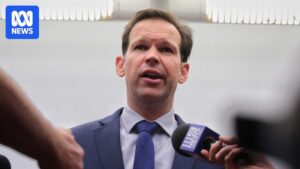
In a landmark decision, world leaders have reached a historic climate agreement at the Global Summit held in Geneva on November 3, 2023. The agreement, hailed as a turning point in international climate policy, aims to significantly reduce carbon emissions by 2030 and transition towards renewable energy sources.
The summit, attended by representatives from over 190 countries, concluded after two weeks of intense negotiations. The agreement sets ambitious targets for reducing greenhouse gases, with developed nations committing to more stringent cuts and financial support for developing countries to aid in their green transitions.
Key Provisions of the Agreement
Central to the agreement is the pledge to limit global warming to 1.5 degrees Celsius above pre-industrial levels. This goal requires a collective reduction in carbon emissions by at least 45% by 2030, compared to 2010 levels. The plan also includes a $100 billion annual fund to support climate adaptation and mitigation efforts in vulnerable regions.
Additionally, the agreement emphasizes the importance of protecting natural ecosystems and enhancing carbon sinks, such as forests and oceans, which are crucial for absorbing carbon dioxide from the atmosphere.
Global Reactions and Implications
The announcement comes as climate change continues to pose significant threats to global stability, with extreme weather events becoming more frequent and severe. Environmental groups have largely praised the agreement, though some have expressed concerns about its implementation and enforcement mechanisms.
Meanwhile, several developing nations have welcomed the financial commitments, which they argue are essential for achieving sustainable development without compromising economic growth. However, they stress the need for transparency and accountability in the distribution and use of funds.
“This agreement is a monumental step forward in the fight against climate change,” said Dr. Maria Hernandez, a leading climate scientist. “However, the real challenge lies in ensuring that these commitments are met and that all countries adhere to their pledges.”
Historical Context and Challenges
This development follows decades of climate negotiations, often marred by disagreements between industrialized and developing nations over responsibilities and financial obligations. The Kyoto Protocol and the Paris Agreement were significant milestones, yet both faced criticism for their lack of binding commitments and enforcement measures.
According to sources familiar with the negotiations, the current agreement builds on these past efforts by incorporating lessons learned and addressing previous shortcomings. The inclusion of a robust monitoring system is seen as a critical component for ensuring compliance and measuring progress.
Looking Ahead: The Path to Implementation
The move represents a significant shift in global climate policy, but experts caution that the path to implementation will be fraught with challenges. Achieving the targets will require unprecedented cooperation among nations, as well as technological innovation and investment in clean energy infrastructure.
As countries begin to outline their national strategies, the focus will be on balancing environmental goals with economic realities. Policymakers will need to engage with industry leaders, scientists, and civil society to develop comprehensive plans that address both immediate and long-term needs.
By the Numbers: The agreement aims for a 45% reduction in global emissions by 2030, with a $100 billion annual fund to support climate initiatives in developing countries.
Ultimately, the success of this historic agreement will depend on the political will and collective action of the international community. As the world grapples with the impacts of climate change, this agreement offers a hopeful path forward, but only if its promises are fulfilled.







